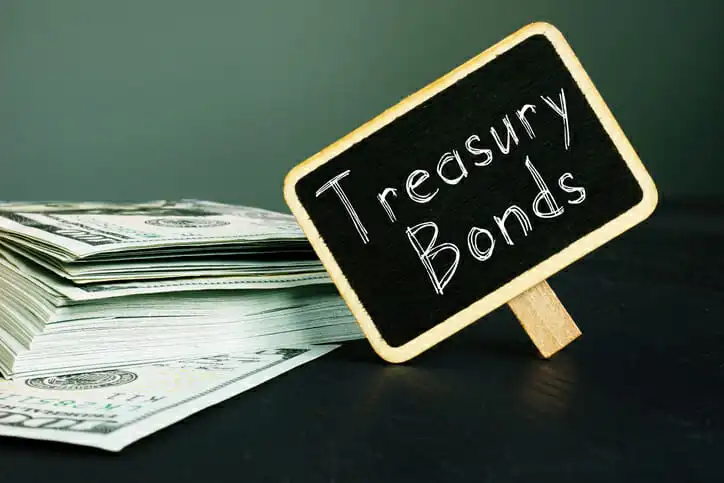
In times of changing interest rates, Wall Street traders like to say, “Don’t fight the Fed.” With returns on bond funds plummeting that could be good advice for fixed-income investors, too. Let’s take a look at why bonds are plummeting and whether investors should put their money in alternate investments.
A financial advisor can help rebalance your portfolio when interest rates change.
Why Bonds Are Plummeting
Since March, the U.S. Federal Reserve Bank’s Open Market Committee has hiked domestic interest rates five times, from nearly 0% to 3%, lowering the value of existing bonds. And the global bond market took an additional hit during the last week of September, when the very proper Bank of England announced a bond-buying spree that will lower interest rates there, causing rates on existing U.K. bonds to swing wildly.
The reason for these rate hikes is the war central bankers are waging on inflation, which has soared globally and stands at 8.3% as of September in the U.S., and this is far from the Fed’s long-run 2% inflation target. That means more Fed hikes are likely, and the central bank’s own forecast predicts that rates could go as high as 4.6% in 2023. That could mean more losses for stocks and bonds. How much, no one knows.
What we do know is that that Fed hikes directly result in higher rates on U.S. Treasuries, which many investors consider a safe investment. Buying into the rising rates of Treasuries means investors can get positive returns at very low risk.
One way to profit on that trend is by building a Treasury bill ladder.
How You Can Make Money With a Treasury Bill Ladder

A Treasury bill ladder consists of a series of short-term Treasury bills that can be rolled over to higher rates every time they mature. Because investors hold the bills until maturity, they don’t have to worry about changing values in the secondary market. As interest rates rise, every increase is captured in the next T-bill purchase, which raises the investor’s yield. If the investor needs cash at that moment – or finds a better investment – they can simply take the money and move on. The same tactic applies when Treasury rates start to decline, thanks to the short duration of the bills.
You can buy T-bills through most investment platforms, usually at a minimum investment of $1,000, or straight from the government at TreasuryDirect.gov, where the minimum investment is a mere $100. And while bank interest and gains on other bonds are subject to state, local and federal tax, profits from Treasuries are taxed only at the federal level, as ordinary income.
Here’s an example of a very simple three-bill ladder strategy from investment advisor Jennifer Lammer:
- The investor purchases a four-week bill, an eight-week bill and a 13-week bill, all in equal amounts.
- When the four-week bill matures, the investor buys a new 13-week bill, at what’s expected to be a higher rate.
- When the eight-week bill matures, the investor buys another new 13-week bill, at what’s also expected to be a higher rate.
- The investor now has a ladder of 13-week Treasuries, with one maturing every four weeks that can be rolled over into another 13-week T-bill.
- This strategy can be repeated until rates start to decline, the investor needs cash, or the investor finds a better alternative investment.
Here’s what the returns would look based on the most recent T-bill auction:
- 4-Week Treasury: 2.703%
- 8-Week Treasury: 3.122%
- 13-Week Treasury: 3.343%
Now, compare that to the highest bank CD and money market account rates:
- 1-Month CD: 0.50%
- 2-Month CD: 0.50%
- 3-Month CD: 1.15%
- Money Market: 2.85%
Investors who want to use a longer holding period could construct a similar ladder using a strategy outlined by David Enna, which uses six 26-week bills purchased monthly for six months, which can be rolled over monthly after the first one matures.
Bottom Line

Because they’re such low-risk investments, a ladder of Treasuries won’t give you huge returns but it will give you positive returns that will beat bank certificate of deposits and money market accounts, while producing gains that can offset inflation.
Investment Tips for Investors During Interest Changes
- If you’re unsure which asset allocation mix will help you meet your investment goals when interest rates change, a financial advisor can help you compare different options for your financial plan. SmartAsset’s free tool matches you with up to three financial advisors who serve your area, and you can interview your advisor matches at no cost to decide which one is right for you. If you’re ready to find an advisor who can help you achieve your financial goals, get started now.
- SmartAsset’s free investment calculator can help you estimate how much your money could grow over time.
Photo credit: ©iStock/Andrii Dodonov, ©iStock/grandriver, ©iStock/gerenme